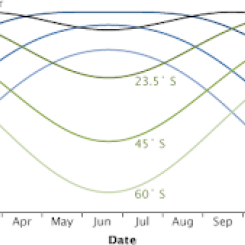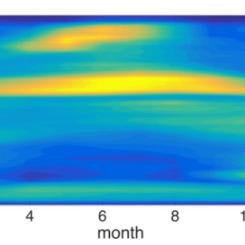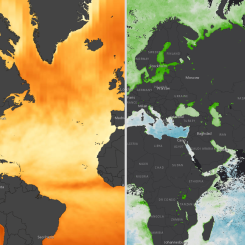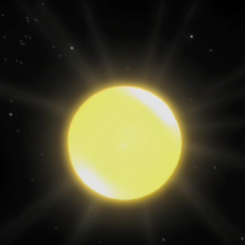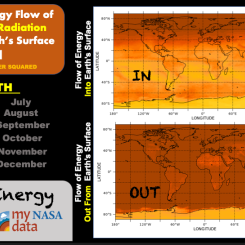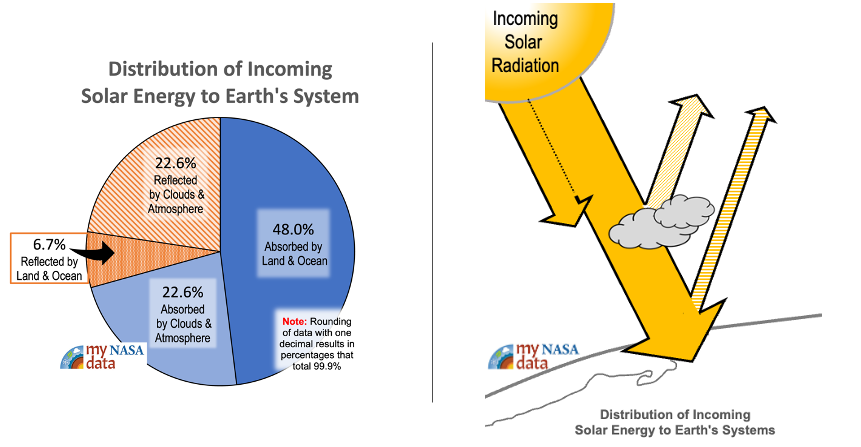Mini Lesson/Activity
Describing Radiation in Earth’s Energy Budget
Overview
Using an infographic, students describe differences in electromagnetic radiation that is part of a model of Earth’s energy budget by applying the defined terms of Shortwave Radiation and Longwave Radiation.
Student Directions
Review the infographic below, illustrating the differences between what scientists describe as “shortwave radiation” and “longwave radiation” involved in Earth’s energy budget. These are descriptors of electromagnetic waves with certain characteristics. Answer the following questions.
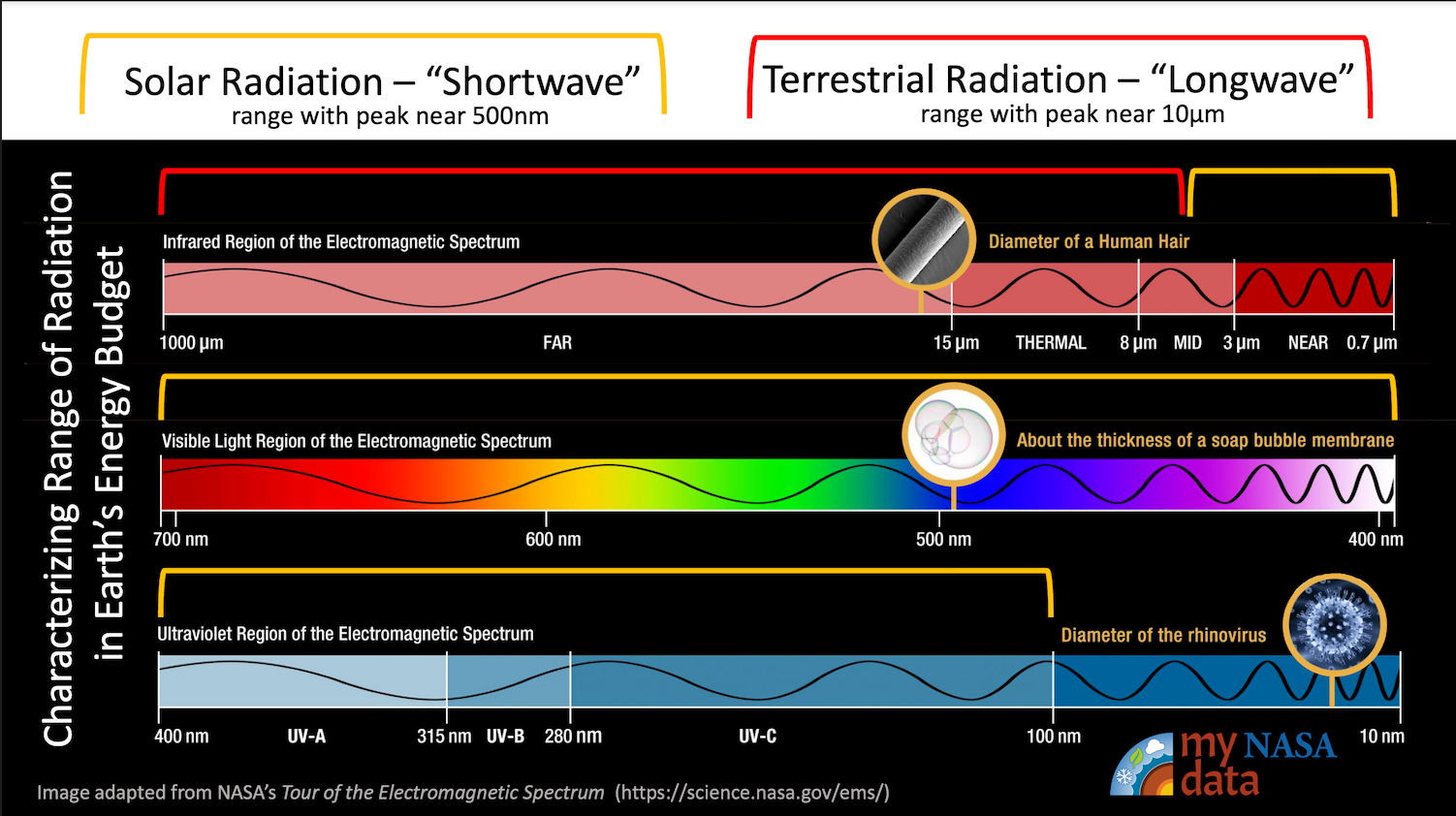
Steps:
- Check with your instructor on how to submit your answers.
- Identify the three distinct classifications of radiation (forms of electromagnetic energy) shown in the infographic.
- Identify the measured value for each type of radiation. What units are used?
- Explain why it is important to not simply compare the numerical values when comparing the measurements of each classification.
- Describe the range of radiation characterized as “shortwave radiation.”
- Describe the range of radiation characterized as “longwave radiation.”
-
Discuss how the energy associated with shortwave radiation compares to the energy associated with longwave radiation.
Review the model of Earth's Energy Budget below, used to communicate the complex transfer of energy in the Earth system that ultimately drives the climate heat engine. Answer the following questions.

Earth Energy Budget Diagram. Source: Loeb et al., J. Clim. 2009 & Trenberth et al., BAMS, 2009 | https://mynasadata.larc.nasa.gov/sites/default/files/inline-images/Earth_energy_budget_Labels.png - Identify the source of “shortwave radiation.”
- Identify the source of “longwave radiation.”
- Describe how the Earth’s energy budget model distinguishes between shortwave and longwave radiation.
- Look closely at the model and describe the different interactions clouds have with shortwave radiation and longwave radiation.
- Identify the heat illustrated in the model that is NOT characterized by either shortwave or longwave radiation.
Sources:
- Butcher, G., & Mottar, J. (2011). Tour of the Electromagnetic Spectrum . (C. L. Parkinson & E. J. Wollack, Eds.)Tour of the Electromagnetic Spectrum (3rd, Third, 3e). United States Government Printing Office. Retrieved July 25, 2022, from https://science.nasa.gov/ems.
- What is Earth's Energy Budget? Five Questions with a Guy Who Knows. (2017, April 10). NASA. Retrieved September 8, 2022, from https://www.nasa.gov/feature/langley/what-is-earth-s-energy-budget-five…
Teacher Note
This mini-lesson may be used to support student understanding of a commonly used model of Earth’s energy budget and clarify terminology used within the context of that model.
Students should have knowledge of the electromagnetic spectrum prior to this lesson.
Teachers, these mini lessons/student activities are perfect "warm up" tasks that can be used as a hook, bell ringer, exit slip, etc. They take less than a class period to complete. Learn more on the "My NASA Data What are Mini Lessons?" page.
Teachers who are interested in receiving the answer key, please complete the Teacher Key Request and Verification Form. We verify that requestors are teachers prior to sending access to the answer keys as we’ve had many students try to pass as teachers to gain access.
Disciplinary Core Ideas:
- ESS2A: Earth Materials and Systems
Crosscutting Concepts:
- Systems and System Models
Science and Engineering Practices:
- Developing and Using Models

